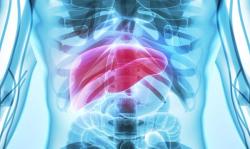
OR WAIT null SECS
Bimekizumab Demonstrates Sustained Efficacy in bDAMRD-Naïve Patients with PsA
At week 52, patients in the bimekizumab cohort demonstrated sustained clinical responses, which were consistent with results reported at week 16.
Biologic disease-modifying antirheumatic drug (bDMARD)-naïve patients with active psoriatic arthritis (PsA) receiving bimekizumab were able to maintain efficacy from week 16 to 52, according to a study published in Annals of Rheumatic Disease.1 Additionally, the drug was well tolerated and no new safety signals were reported.
“PsA is a chronic, long-term disease, therefore treatment options that provide inflammation control and long-term, durable efficacy and tolerability are needed,” wrote lead investigator Christopher T Ritchlin, MD, MPH, director of the Clinical Immunology Research Unit, University of Rochester Medical School, Allergy, Immunology & Rheumatology Division, University of Rochester, and colleagues. “Treatment should aim to achieve the lowest possible level of disease activity across domains, assessed using more stringent disease measures such as American College of Rheumatology response criteria (ACR) ≥50% improvement, Psoriasis Area and Severity Index (PASI) 100% improvement, and minimal disease activity (MDA).”
Interleukin (IL)-17A and IL-17F have previously been proven as independent drivers of joint and skin inflammation in PsA. IL-17A and IL-17F inhibitors, such as bimekizumab, may be an effective treatment option for this patient population. Additionally, recent research has shown the inhibition of both of these cytokines, known as dual neutralization, may be an increasingly effective treatment strategy, with the benefits of this approach demonstrated in previous phase 3b clinical trials of patients with psoriasis. It may also help patients obtain greater disease control and improve the symptoms of inflammatory conditions like PsA.2
The BE OPTIMAL study a 16-week, multicenter, active reference, placebo-controlled, double-blind trial, followed by a 36-week treatment-blind period. Eligible patients were randomized 3:2:1 to receive subcutaneous bimekizumab 160 mg every 4 weeks, placebo with a switch to bimekizumab at week 16, or adalimumab 40 mg every 2 weeks.
Efficacy outcomes of interest included ACR20/50/70, PASI75/90/100 in those with a baseline psoriasis affecting ≥3% body surface area, and MDA through week 52. Investigators also evaluated long-term safety outcomes using treatment-emergent adverse events (TEAEs), serious adverse events, and TEAEs leading to treatment discontinuation.
Patient-reported outcomes included the Functional Assessment of Chronic Illness Therapy (FACIT)- Fatigue, Health Assessment Questionnaire-Disability Index (HAQ-DI), Patient’s Assessment of Arthritis Pain (PtAAP), Psoriatic Arthritic Impact of Disease-12 item Questionnaire (PsAID-12), and the Short Form 36-item health survey Physical Component Summary (SF-36 PCS).
At week 52, patients in the bimekizumab cohort demonstrated sustained ACR20/50/70, PASI75/90/100, and MDA responses, which were consistent with results reported at week 16. Those who switched from the placebo to bimekizumab at week 16 also demonstrated improvements in efficacy with similar results to those originally receiving bimekizumab by week 52. Improvements in patient-reported physical function were observed in patients in the bimekizumab cohorts.
The percentage of patients obtaining ACR50 was maintained from week 16 to week 52 and approximately half of the patients continuing treatment achieved ACR50 at week 52 (bimekizumab: 54.5%; adalimumab: 50.0%). Improvements in skin, including complete skin clearance, were sustained between week 16 and week 52 in patients with ≥3% body surface area affected by psoriasis at baseline. Regarding MDA, at week 16, 13.2% of those in the placebo cohort, 45.0% of those in the bimekizumab cohort, and 45.0% of those in the adalimumab cohort achieved minimal activity. At week 52, 55.0% of those in the bimekizumab group and 52.9% in the adalimumab group achieved MDA.
Most patients (79.1%, n = 555/702) treated with bimekizumab had ≥1 TEAE, compared with 80.7% (n = 113/140) of those in the adalimumab group. At the end of treatment, 46 (6.6%) patients in the bimekizumab reported serious TEAEs, as well as 1 death unrelated to treatment. Candida infections occurred in 54 (7.7%) patients receiving bimekizumab and 1 (.7%) of those in the adalimumab group; however, all cases were categorized as localized and non-serious.
Investigators noted the small size of the subgroup of patients with dactylitis or enthesitis at baseline may have limited results. However, a difference between bimekizumab- and placebo-treated patients were observed at week 16, which continued through week 52. Additionally, no comparisons between adalimumab- and bimekizumab-treated patients could be made as the study was not powered for such statistical assessments.
“Results to Week 52 from BE OPTIMAL suggest that bimekizumab is an effective long-term treatment option in bDMARD-naïve patients with active PsA,” investigators concluded. “Long-term safety and efficacy data will be assessed in the ongoing open-label extension study, BE VITAL.”
References
- Ritchlin CT, Coates LC, McInnes IB, et al. Bimekizumab treatment in biologic DMARD-naïve patients with active psoriatic arthritis: 52-week efficacy and safety results from the phase III, randomised, placebo-controlled, active reference BE OPTIMAL study [published online ahead of print, 2023 Sep 11]. Ann Rheum Dis. 2023;ard-2023-224431. doi:10.1136/ard-2023-224431
- Burns LA, Maroof A, Marshall D, et al. Presence, function, and regulation of IL-17F-expressing human Cd4+ T cells. Eur J Immunol 2020;50:568–80. doi:10.1002/eji.201948138
Related Content:


